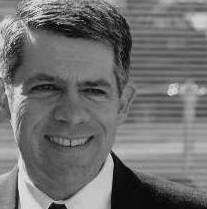Then two friends on Facebook, sisters actually, began discussions about favorite books and the Kindle. That got me thinking about e-books. eBooks have a unique potential to create a hook. They also have to guard against the temptation to go too far. Bruce Barton suggests:
"If you have anything really valuable to contribute to the world, it will come through the expression of your own personality, that single spark of divinity that sets you off and makes you different from every other living creature.”
There is much discussion about websites having personality and how that attracts or detracts readership. Books also have personalities and quickly bond with some readers and repel others. With e-books, personality goes beyond titles and content and into the realm of visual design, dynamic graphic art, and usability, not just readability.
Sometimes the problem is that the author or publisher does it because they can. But they really can’t. Just because someone owns PageMaker, or FrontPage or even Quark or DreamWeaver doesn’t make the amateur a professional. Putting a bunch of great graphics in an e-book may detract more than help. In a 2006 interview with Luke Wroblewski , he quotes Curt Cloninger as saying, “usability experts are from Mars and graphic designers are from Venus. They are simply different animals and it takes great talent to bring the two together.
Without picking on some terrible designs, I will use an example from an ebook designer, Steven Schneiderman (http://www.designingebookcovers.com/). So which cover do you like? How do the fonts and layout and colors work together or against each other?



I have read several ebooks that have had potential but the design was terrible and the eye strain finally caused me to close the book. Navigation, download, and construction are important elements for any book, but especially an ebook.
Instead of providing some bad designs, I will offer one well done e-book design that tells the story and leverages the strengths of design and usability, while not creating a monster. Alex Dukal is a n illustrator of children’s books. You can see some of his work at http://www.circografico.com.ar/. I will admit I am a little partial because he is Argentine and I spent three wonderful years there, including Patagonia where he lives (although I don’t know him and only discovered his work recently). His design is rich, interesting and appealing. He uses a range of visual techniques to draw your attention, make you interested and to give you a warm feeling about the quality of the work. “But it's also simple, because it uses its pixels/ink/busyness with care and sensitivity. It's not gratuitous, it's economical and rich,” according to author Ben Hunt.

If ebooks are going to carve a significant portion of the market space we are going to need more than 3G Kindles. I look forward to the progress, even though I will still be buying physical books.



